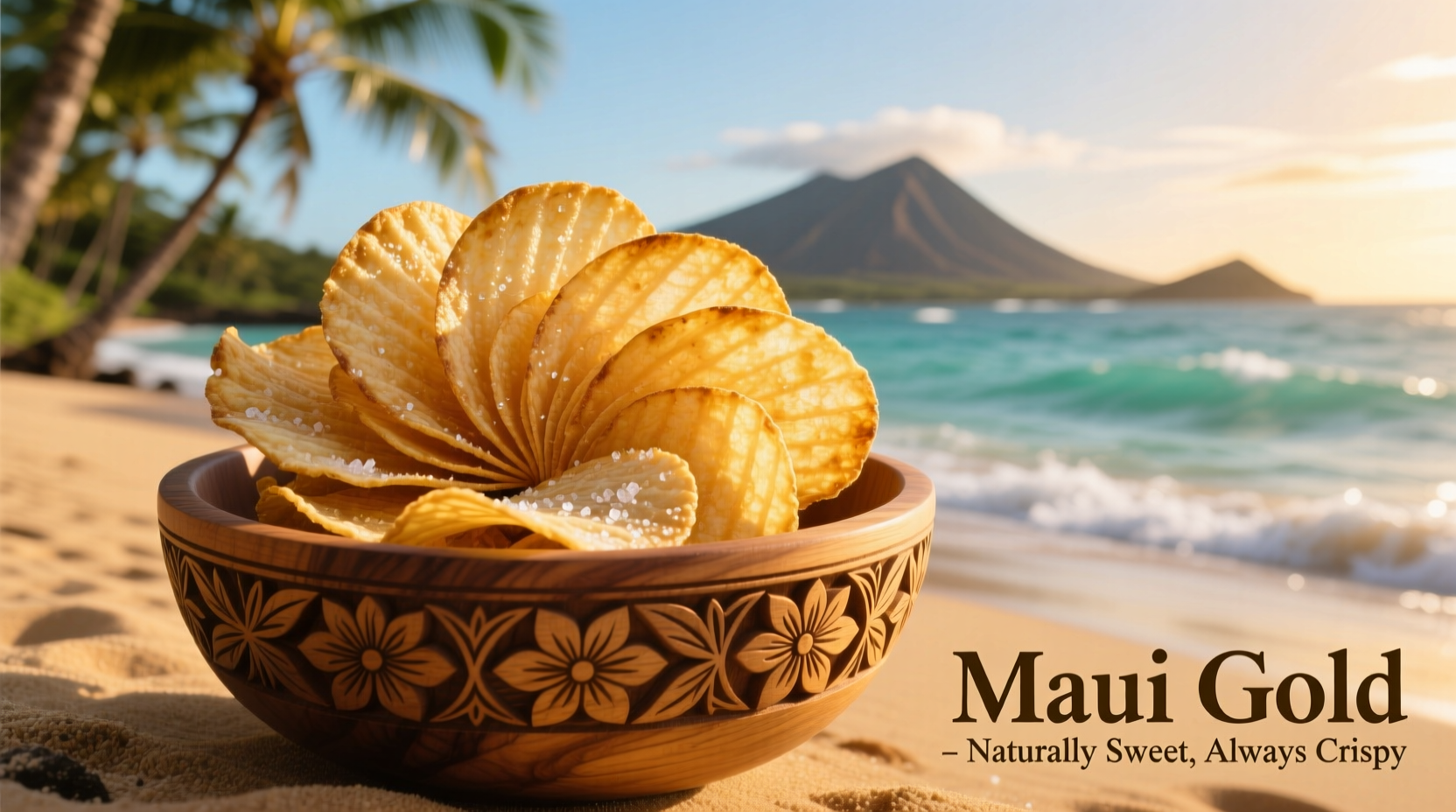When you bite into authentic Hawaii Maui onion chips, you're experiencing a culinary tradition rooted in the volcanic soil of Maui's Kula region. These aren't your average snack chips—they represent a perfect marriage of agricultural innovation and Hawaiian food culture that has captivated both locals and visitors for decades.
The Sweet Onion Revolution That Created a Snack Icon
Maui's journey to onion chip fame began with an agricultural accident. In the 1950s, a seed shipment intended for California mistakenly delivered sweet onion varieties to Maui farmers. The island's unique combination of volcanic soil, mild climate, and consistent rainfall proved ideal for cultivating these unexpectedly sweet onions. By the 1980s, local entrepreneurs recognized their potential as a specialty product and began crafting the first commercial Maui onion chips.
| Feature | Maui Onion Chips | Regular Onion Chips |
|---|---|---|
| Base Ingredient | Maui Sweet Onions (Allium cepa) | Yellow or White Onions |
| Sugar Content | 12-16% (naturally occurring) | 4-6% (naturally occurring) |
| Sulfur Compounds | 40% lower than standard onions | Standard levels |
| Aftertaste | Sweet, mild finish | Sharp, lingering burn |
| Regional Designation | Protected by Hawaii Agricultural Standards | No regional protection |
What Makes Authentic Maui Onion Chips Special
The magic happens in Maui's Kula region, where elevation between 1,000-3,000 feet creates ideal growing conditions. The volcanic soil provides perfect drainage while retaining just enough moisture, and the consistent trade winds prevent disease without requiring heavy pesticide use. This terroir produces onions with naturally higher sugar content and lower sulfur compounds—giving them that signature sweetness without the harsh aftertaste of regular onions.
When transformed into chips, authentic producers follow a meticulous process:
- Onions are harvested at peak sweetness (typically March-May)
- Sliced paper-thin using specialized equipment
- Fried in small batches with high-quality oil
- Lightly salted without additional flavorings
- Packaged immediately to preserve freshness
Maui Onion Chips Timeline: From Farm to Favorite Snack
The evolution of Maui onion chips reflects Hawaii's agricultural innovation:
- 1952: Accidental introduction of sweet onion varieties to Maui
- 1970s: Maui Land & Pineapple Company begins commercial cultivation
- 1983: First commercial Maui onion chips produced by local entrepreneur
- 1995: Hawaii Agricultural Standards establish protected designation
- 2008: Maui onion chips gain international recognition at food expos
- Present: Annual production exceeds 500,000 pounds with strict quality controls
Where Maui Onion Chips Shine (And Where They Don't)
Understanding the appropriate context for Maui onion chips helps maximize your enjoyment. These delicate snacks excel in specific situations but have limitations:
Ideal Applications:
- As a standalone snack with beverages
- Crumbled over seafood dishes for texture contrast
- With light dips like mango salsa or avocado crema
- As a salad topping for subtle crunch
- Paired with white wines or tropical cocktails
Less Suitable Applications:
- With strongly flavored dips that overwhelm their subtlety
- In recipes requiring high-heat cooking (they burn easily)
- As a substitute for regular onion chips in robust dishes
- Stored for extended periods after opening (best consumed fresh)
How to Identify Genuine Maui Onion Chips
With imitations flooding the market, knowing how to spot authentic products is essential. True Maui onion chips display these characteristics:
- Packaging: Look for "Maui Grown" certification and producer information
- Color: Golden yellow, not deep brown (indicates proper frying temperature)
- Texture: Delicate crispness that shatters when bitten
- Aroma: Sweet, caramel-like scent without oiliness
- Taste: Initial sweetness followed by mild onion flavor
According to the Hawaii Department of Agriculture's Maui Onion Standards, authentic products must contain at least 51% Maui-grown onions and be processed on the island. This regulation protects both consumers and local farmers from misleading imitations.
Creative Ways to Enjoy Maui Onion Chips Beyond Snacking
While delicious on their own, Maui onion chips shine when incorporated thoughtfully into dishes:
- Seafood Enhancement: Sprinkle over grilled mahi-mahi or ahi tuna for texture contrast
- Cocktail Garnish: Use as an elegant rim for mai tais or vodka-based tropical drinks
- Salad Topper: Add delicate crunch to green salads without overpowering flavors
- Appetizer Base: Layer with fresh goat cheese and mango for bite-sized hors d'oeuvres
- Homemade Dip Mix: Crush and blend with sour cream for a subtle onion dip

Where to Find Authentic Maui Onion Chips
The most authentic experience comes from purchasing directly on Maui, where you'll find them at:
- Local farmers' markets (especially the Maui Swap Meet)
- Specialty food stores like Mana Foods or Down the Hatch
- Many restaurants as complimentary pre-dinner snacks
- Direct from producers like Maui Fresh or Kula Grown Foods
Outside Hawaii, look for them in specialty food stores with strong Pacific Rim selections, high-end grocery chains, or through select online retailers that guarantee authentic sourcing. Be wary of products simply labeled "Hawaiian" without specific Maui origin claims.
Preserving a Hawaiian Culinary Treasure
As demand grows, maintaining the integrity of Maui onion chips becomes increasingly important. Local producers work with the University of Hawaii's College of Tropical Agriculture to preserve the unique genetics of Maui onions while adapting to climate challenges. This collaboration ensures future generations can continue enjoying this distinctive taste of Hawaii.











 浙公网安备
33010002000092号
浙公网安备
33010002000092号 浙B2-20120091-4
浙B2-20120091-4